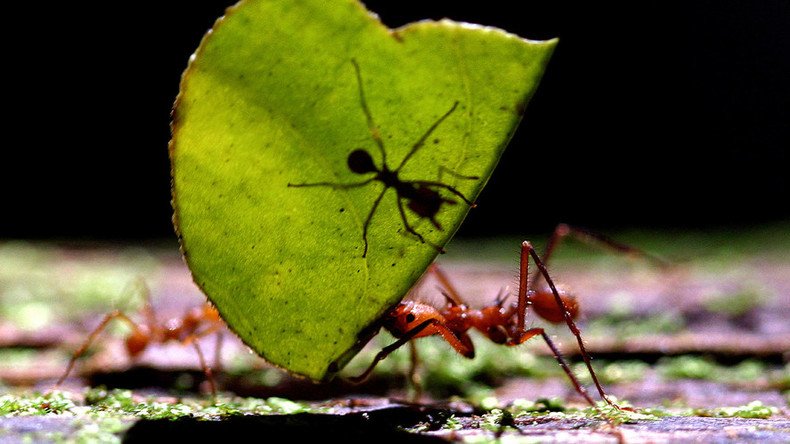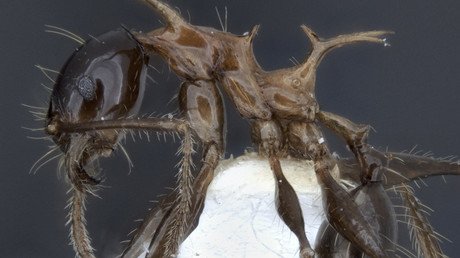A bug’s life: Hardy ants construct tragic but ‘unique’ colony in Soviet-era bunker

Scientists have unearthed an unusual ant colony that manages to survive despite living in the nightmarish conditions of a decrepit nuclear bunker and having no obvious sustainable source of nutrition.
The wood ant collective has intrigued researchers who found the insects in an underground fortress in Templewo, Poland, used to store Soviet weapons up until the early 90s.
The two-storey bunker is not the most hospitable of places, even for an insect, according to a new study of the colony.
Led by Polish Academy of Sciences researcher Wojciech Czechowski, the study reveals how the colony has staved off extinction in seemingly impossible conditions, after nesting above a rusted ventilation shaft leading into the building.
Having fallen into the manmade abyss the ants have no access to the outside world, save for a few hibernating bats and a smattering of soil.
However, their ‘imprisonment’ in a limewashed concrete cellar did not spell the end for the creatures and the colony has managed to live on despite harsh conditions and total darkness.
This is harrowing. The bleak, endless, dystopian life of wood ants in a disused Soviet nuclear bunker. https://t.co/CaisgZFPxu
— Alex Mullane (@Mullane45) September 3, 2016
The authors of the Journal of Hymenoptera Research paper are astonished at how the insects have kept up “basic activities of nest maintenance” in a landscape completely at odds with survival.
The colony’s numbers are also apparently replenished every year by misfortune: other ants falling from higher ground into the Soviet bunker crevasse.
READ MORE: ‘Mass killing’: Anti-Zika spraying accidentally slays millions of SC’s honeybees
“Through the years the mortality has been more than compensated by new workers that fall down during the active season of the free-living colony outside, and at present the number of the bunker workers is counted in hundreds of thousands,” the study states.
I'm scared of ants, but these are amazing! Fall down a hole with no chance of escape and keep a colony going! https://t.co/WyNeOfkg1M
— doris vickers (@doris_vickers) September 1, 2016
“The ‘colony’ has evidently produced no offspring, which is due to low (though relatively stable) temperatures and scanty food in the bunker.”
READ MORE: 'We're popularizing insect-eating': Japanese uni crowdfunds cricket farming tech
Discovered in 2013, scientists have found nearly one million worker ants but no queen, or cocoons, both key elements in reproduction. Large ‘cemeteries’ containing evidence of almost 2 million dead ants were also found.
The study concludes the functioning colony is an example of the insects’ endurance: “Although superficially looking like a functioning colony with workers teeming on the surface of the mound – [the colony] is rather an example of survival of a large amount of workers trapped within a hostile environment in total darkness, with constantly low temperatures and no ample supply of food.”












